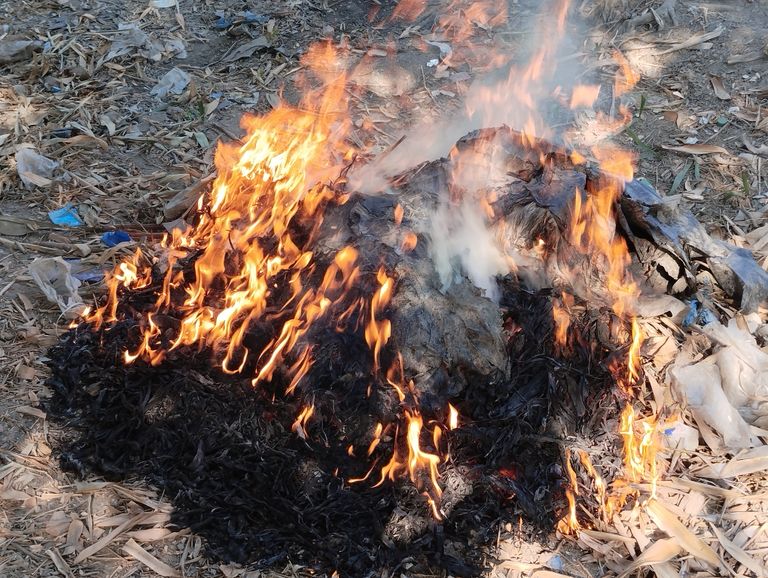
The Terrifying Heat of Fire.
Fire is one of the most powerful natural forces known to humankind. It has the ability to provide warmth, cook food, and generate energy, but it can also destroy everything in its path within moments. The terrifying heat of fire is a force that demands both respect and caution. In this blog, we will explore the science behind fire’s heat, its impact on the environment, and how to protect ourselves from its devastating effects.
Understanding the Intensity of Fire’s Heat
Fire is essentially a chemical reaction known as combustion. When a material reaches its ignition temperature, it begins to burn, releasing heat, light, and gases. The temperature of fire can vary based on the type of material burning, the availability of oxygen, and other environmental conditions.
Here’s a breakdown of different fire temperatures:
Candle Flame: Around 1,400°F (760°C)
Wood Fire: 1,100–1,650°F (593–900°C)
Gasoline Fire: Up to 3,500°F (1,927°C)
Lava: 1,300–2,200°F (700–1,200°C)
Welding Torch: Over 5,000°F (2,760°C)
At such high temperatures, fire can melt metals, shatter glass, and incinerate almost anything in its way. The terrifying part is that fire spreads quickly, consuming oxygen and leaving behind destruction.
The Impact of Fire’s Heat on Humans
Fire’s extreme heat has severe effects on the human body. In cases of direct exposure, it can cause:
- Burn Injuries: The most common and immediate effect, ranging from first-degree (mild) to third-degree (severe) burns.
- Heat Exhaustion & Heatstroke: Prolonged exposure to high temperatures can lead to dehydration, dizziness, and unconsciousness.
- Smoke Inhalation: Even if someone is not directly burned, the hot gases and toxic smoke can damage the lungs, leading to fatal injuries.
- Structural Collapse: Extreme heat weakens buildings, bridges, and other structures, making them unstable and dangerous.
Fire’s Devastating Impact on the Environment
Wildfires, house fires, and industrial fires are major environmental disasters. The heat from wildfires can reach over 1,800°F (980°C), igniting everything in its path. Here are some of the most terrifying consequences:
Deforestation: Thousands of acres of forests are destroyed every year due to wildfires.
Loss of Wildlife: Many animals are unable to escape the intense heat and die in large numbers.
Air Pollution: Fires release carbon monoxide, carbon dioxide, and other harmful chemicals into the air, leading to severe respiratory problems.
Climate Change Contribution: Large-scale fires release massive amounts of greenhouse gases, accelerating global warming.
Fire Prevention and Safety Measures
Although fire is a natural phenomenon, human negligence often makes it worse. Here are some crucial safety measures to prevent fire-related disasters:
For Homes and Buildings:
Install smoke alarms and test them regularly.
Keep fire extinguishers in accessible places.
Never leave stoves or candles unattended.
Store flammable materials properly.
Have an emergency evacuation plan.
For Wildfire Prevention:
Avoid discarding cigarettes in dry areas.
Follow campfire guidelines and extinguish fires completely.
Maintain a fire-resistant landscape around your home.
Report any signs of fire hazards to authorities immediately.
For Industrial Areas:
Ensure all workers receive fire safety training.
Keep flammable chemicals in designated storage.
Conduct regular safety inspections.
Have emergency shutdown procedures in place.
Fire is both a friend and a foe. While it has been crucial to human civilization for survival and development, its terrifying heat can lead to unimaginable destruction. Understanding fire’s nature, taking proper safety precautions, and spreading awareness can help prevent fire-related disasters. Respecting fire’s power is the first step toward ensuring safety for ourselves, our homes, and our planet. By learning about the devastating heat of fire, we can better appreciate its force and take necessary measures to control its impact. Stay safe, stay informed, and always be prepared.
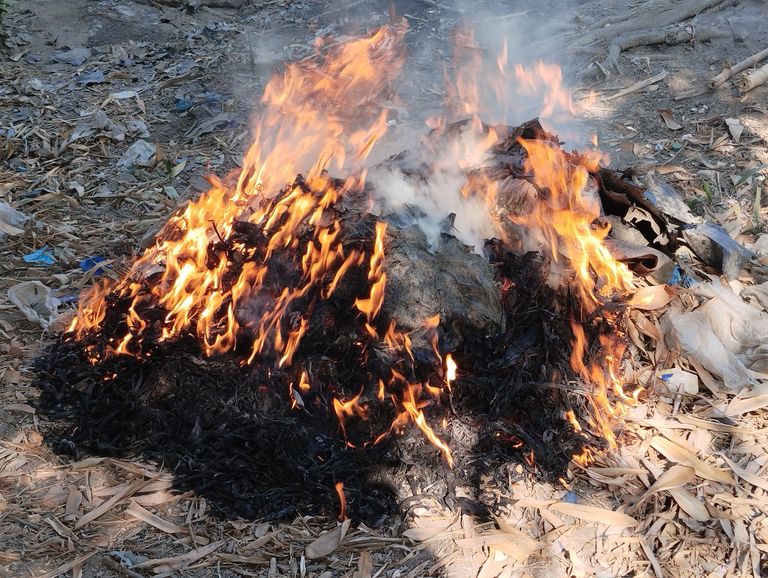
How to Start a Fire: A Complete Guide
Starting a fire is an essential skill for survival, camping, and outdoor activities. Whether you need a fire for warmth, cooking, or signaling for help, knowing the right techniques can make all the difference. In this guide, we will walk you through the process of safely and efficiently starting a fire in different situations.
- Understanding the Basics of Fire
Fire needs three key elements to burn, often called the fire triangle:
Heat: A spark or flame to ignite the fire.
Fuel: Dry wood, twigs, leaves, or other flammable materials.
Oxygen: Airflow to sustain the fire.
If any of these elements are missing, the fire will not start or will go out.
- Choosing the Right Location
Selecting a good spot is crucial for safety and efficiency. Here’s what to consider:
Shelter from Wind: Too much wind can blow out your fire or spread it uncontrollably.
Dry Ground: Avoid damp or wet areas, as moisture makes it harder to ignite materials.
Away from Flammable Objects: Keep the fire away from tents, dry grass, and trees.
Fire Pit or Ring: If possible, use an established fire ring or create a fire pit with stones.
- Gathering the Right Materials
To build a successful fire, you need three types of fuel:
a) Tinder (Catches fire easily)
Dry leaves
Twigs
Bark shavings
Cotton balls with petroleum jelly
Dryer lint
Paper
b) Kindling (Small sticks that help the fire grow)
Small dry branches
Wood shavings
Cardboard strips
c) Firewood (Keeps the fire burning)
Larger dry logs
Split wood
Hardwood for longer-lasting fires
Pro Tip: Dry wood burns best. Wet or green wood produces more smoke and is harder to ignite.
- Methods to Start a Fire
a) Using Matches or a Lighter
- Arrange tinder in a small pile.
- Place kindling around it in a teepee or log cabin shape.
- Light the tinder and gently blow to help the flame grow.
- Gradually add larger pieces of wood as the fire strengthens.
b) Fire Starter Tools
Flint and Steel: Strike flint against steel to create sparks.
Ferrocerium Rod: Produces hot sparks when scraped with metal.
Magnifying Glass: Focus sunlight on dry tinder until it catches fire.
c) Primitive Methods (Survival Techniques)
Bow Drill: Use a bow, spindle, and fireboard to create friction and generate an ember.
Hand Drill: Roll a spindle between your palms against a fireboard.
Fire Plow: Push a stick along a groove in dry wood to create heat and sparks.
- Fire Building Techniques
a) Teepee Fire
Arrange tinder in a small pile.
Place kindling around it in a teepee shape.
Light the center and let the fire grow.
b) Log Cabin Fire
Place two large logs parallel to each other.
Stack smaller logs crisscross over them.
Put tinder in the center and light it.
c) Lean-To Fire
Place a large log as a windbreak.
Lean kindling against the log.
Place tinder underneath and light it.
- Keeping the Fire Safe
Never Leave a Fire Unattended: Always watch the fire, especially around children and pets.
Have Water Nearby: Keep water, dirt, or sand ready to put out the fire.
Control the Fire Size: Keep it small and manageable.
Extinguish Properly: Pour water over the fire, stir the ashes, and repeat until cold.
- Fire in Wet Conditions
Use birch bark or fatwood, which burn even when damp.
Look for dry wood under fallen logs or inside tree stumps.
Carry waterproof matches or a lighter in a sealed bag.
- Alternative Fire Starters
Char Cloth: Small fabric pieces turned into embers with a spark.
Vaseline-Coated Cotton Balls: Burn longer than regular tinder.
Egg Cartons with Wax: Great for emergency fire starters.
Knowing how to start a fire is an essential outdoor survival skill. By understanding the fire triangle, choosing a good location, and using the right materials, you can efficiently start and maintain a fire in any situation. Always follow safety guidelines and leave no trace to protect nature. Would you like a printable version or more tips on survival techniques? Let me know.
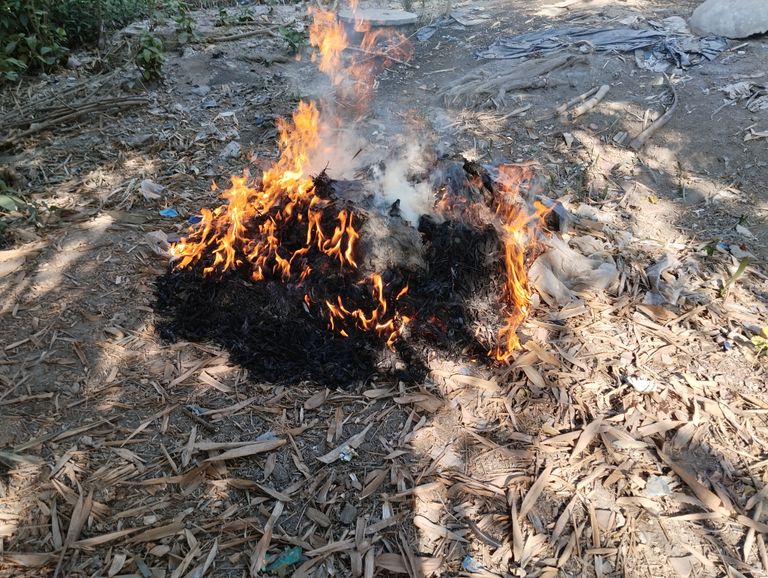
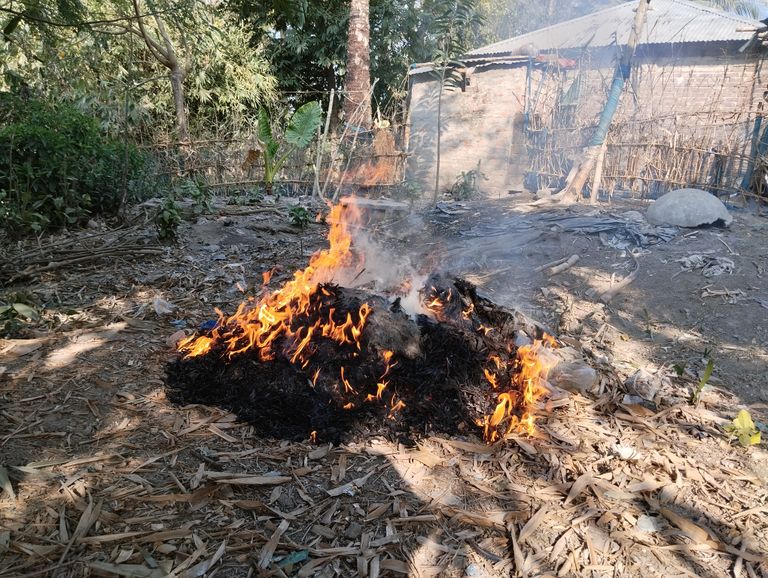
The Origin of Fire: A Journey Through Science, Nature, and History
Fire is one of the most significant forces in the natural world and human history. It has shaped civilizations, powered technological advancements, and played a crucial role in evolution. But where did fire come from? How did humans learn to control it? In this blog, we will explore the origin of fire from a scientific, natural, and historical perspective.
- What is Fire?
Before diving into its origin, let's understand what fire actually is.
The Science of Fire
Fire is a chemical reaction known as combustion. It occurs when a fuel source reacts with oxygen in the presence of heat, producing flames, light, and heat. The key elements of fire are:
Fuel: Wood, gas, or any other combustible material.
Oxygen: Supports combustion by reacting with fuel.
Heat: Initiates and sustains the reaction.
This is known as the fire triangle—if one element is missing, fire cannot exist.
- The Natural Origins of Fire
a) Fire in the Universe
Fire is not unique to Earth. The Sun and other stars burn through nuclear fusion, a process that releases immense energy. However, the type of fire we experience on Earth is a result of chemical reactions, not nuclear fusion.
b) Fire on Earth Before Humans
Fire existed on Earth long before humans. Natural events such as:
Lightning Strikes: A major cause of wildfires in forests and grasslands.
Volcanic Eruptions: Lava and hot gases ignite surrounding materials.
Meteor Impacts: The intense heat from meteors can trigger fires.
Fossil records suggest that wildfires have been occurring for at least 420 million years, coinciding with the rise of oxygen in Earth’s atmosphere.
- Fire and Early Humans
a) The Discovery of Fire
The exact moment when humans first encountered fire is unknown, but early humans likely saw wildfires caused by natural events. Over time, they learned to control and use fire for survival.
Archaeological evidence suggests that human ancestors, like Homo erectus, started using fire about 1.5 million years ago. The earliest confirmed controlled use of fire is from the Wonderwerk Cave in South Africa, dating back 1 million years.
b) How Did Early Humans Use Fire?
- Warmth and Protection: Fire provided heat during cold nights and kept predators away.
- Cooking: Cooking food made it easier to chew and digest, leading to better nutrition.
- Hunting and Tools: Fire was used to harden wooden spears and drive animals into traps.
- Social and Cultural Development: Fire helped in storytelling, rituals, and the development of early societies.
The ability to control fire marked a turning point in human evolution, leading to brain development and social cooperation.
- The Evolution of Fire Technology
As humans progressed, they developed better ways to create and use fire.
a) Early Fire-Making Techniques
Friction Methods: Rubbing sticks together (fire drill, hand drill, bow drill).
Percussion Methods: Striking flint against iron pyrite to create sparks.
Fire Carrying: Early humans transported embers in animal shells or bark to preserve fire.
b) The Age of Controlled Fire
Torches: Used for light in caves and night travel.
Kilns and Pottery: Fire was used for making stronger pottery and tools.
Metallurgy: The Bronze and Iron Ages were made possible by fire, allowing the creation of weapons and tools.
By 200,000 years ago, fire had become an essential part of daily life for early Homo sapiens.
- Fire in Ancient Civilizations
Fire played a central role in ancient cultures, mythology, and religions.
a) Fire in Mythology
Greek Mythology: Prometheus stole fire from the gods and gave it to humans.
Hinduism: Agni, the fire god, is a key figure in Vedic rituals.
Norse Mythology: Fire giants (Jötnar) are part of Ragnarok, the end of the world.
b) Fire in Early Societies
China: Fire was crucial for metalwork, ceramics, and medicine.
Egypt: Used fire for glassmaking and religious ceremonies.
Rome: The Vestal Virgins maintained a sacred fire that symbolized Rome’s eternal power.
- The Scientific Understanding of Fire
As human knowledge expanded, so did our understanding of fire.
a) The Chemical Revolution
In the 18th century, Antoine Lavoisier discovered that fire is a result of oxygen combining with fuel, debunking the ancient "phlogiston" theory.
b) The Industrial Use of Fire
The Steam Engine (18th century) used fire to generate power, fueling the Industrial Revolution.
Electricity and Combustion Engines in the 19th and 20th centuries changed transportation and industry.
- The Future of Fire
As technology advances, our relationship with fire continues to evolve.
a) Fire in Modern Society
Controlled Burns: Used to prevent wildfires.
Fireproof Materials: Developed to protect buildings.
Rocket Science: Fire is essential for space exploration.
b) Sustainable Fire Use
With concerns about climate change, scientists are exploring clean energy alternatives to reduce dependence on fire-based fuel sources.
Fire has been a defining force in nature, human evolution, and technological advancement. From natural wildfires to controlled flames in modern industries, fire continues to shape our world. Understanding its origins and evolution helps us appreciate its power and responsibility in using it wisely.
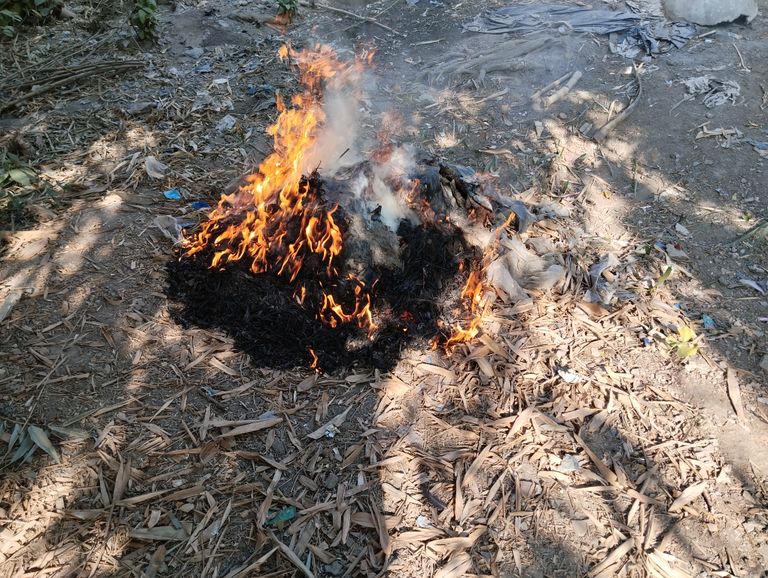
The Origin of Fire: A Journey Through Science, Nature, and History
Fire is one of the most significant forces in the natural world and human history. It has shaped civilizations, powered technological advancements, and played a crucial role in evolution. But where did fire come from? How did humans learn to control it? In this blog, we will explore the origin of fire from a scientific, natural, and historical perspective.
- What is Fire?
Before diving into its origin, let's understand what fire actually is.
The Science of Fire
Fire is a chemical reaction known as combustion. It occurs when a fuel source reacts with oxygen in the presence of heat, producing flames, light, and heat. The key elements of fire are:
Fuel: Wood, gas, or any other combustible material.
Oxygen: Supports combustion by reacting with fuel.
Heat: Initiates and sustains the reaction.
This is known as the fire triangle—if one element is missing, fire cannot exist.
- The Natural Origins of Fire
a) Fire in the Universe
Fire is not unique to Earth. The Sun and other stars burn through nuclear fusion, a process that releases immense energy. However, the type of fire we experience on Earth is a result of chemical reactions, not nuclear fusion.
b) Fire on Earth Before Humans
Fire existed on Earth long before humans. Natural events such as:
Lightning Strikes: A major cause of wildfires in forests and grasslands.
Volcanic Eruptions: Lava and hot gases ignite surrounding materials.
Meteor Impacts: The intense heat from meteors can trigger fires.
Fossil records suggest that wildfires have been occurring for at least 420 million years, coinciding with the rise of oxygen in Earth’s atmosphere.
- Fire and Early Humans
a) The Discovery of Fire
The exact moment when humans first encountered fire is unknown, but early humans likely saw wildfires caused by natural events. Over time, they learned to control and use fire for survival.
Archaeological evidence suggests that human ancestors, like Homo erectus, started using fire about 1.5 million years ago. The earliest confirmed controlled use of fire is from the Wonderwerk Cave in South Africa, dating back 1 million years.
b) How Did Early Humans Use Fire?
- Warmth and Protection: Fire provided heat during cold nights and kept predators away.
- Cooking: Cooking food made it easier to chew and digest, leading to better nutrition.
- Hunting and Tools: Fire was used to harden wooden spears and drive animals into traps.
- Social and Cultural Development: Fire helped in storytelling, rituals, and the development of early societies.
The ability to control fire marked a turning point in human evolution, leading to brain development and social cooperation.
- The Evolution of Fire Technology
As humans progressed, they developed better ways to create and use fire.
a) Early Fire-Making Techniques
Friction Methods: Rubbing sticks together (fire drill, hand drill, bow drill).
Percussion Methods: Striking flint against iron pyrite to create sparks.
Fire Carrying: Early humans transported embers in animal shells or bark to preserve fire.
b) The Age of Controlled Fire
Torches: Used for light in caves and night travel.
Kilns and Pottery: Fire was used for making stronger pottery and tools.
Metallurgy: The Bronze and Iron Ages were made possible by fire, allowing the creation of weapons and tools.
By 200,000 years ago, fire had become an essential part of daily life for early Homo sapiens.
- Fire in Ancient Civilizations
Fire played a central role in ancient cultures, mythology, and religions.
a) Fire in Mythology
Greek Mythology: Prometheus stole fire from the gods and gave it to humans.
Hinduism: Agni, the fire god, is a key figure in Vedic rituals.
Norse Mythology: Fire giants (Jötnar) are part of Ragnarok, the end of the world.
b) Fire in Early Societies
China: Fire was crucial for metalwork, ceramics, and medicine.
Egypt: Used fire for glassmaking and religious ceremonies.
Rome: The Vestal Virgins maintained a sacred fire that symbolized Rome’s eternal power.
- The Scientific Understanding of Fire
As human knowledge expanded, so did our understanding of fire.
a) The Chemical Revolution
In the 18th century, Antoine Lavoisier discovered that fire is a result of oxygen combining with fuel, debunking the ancient "phlogiston" theory.